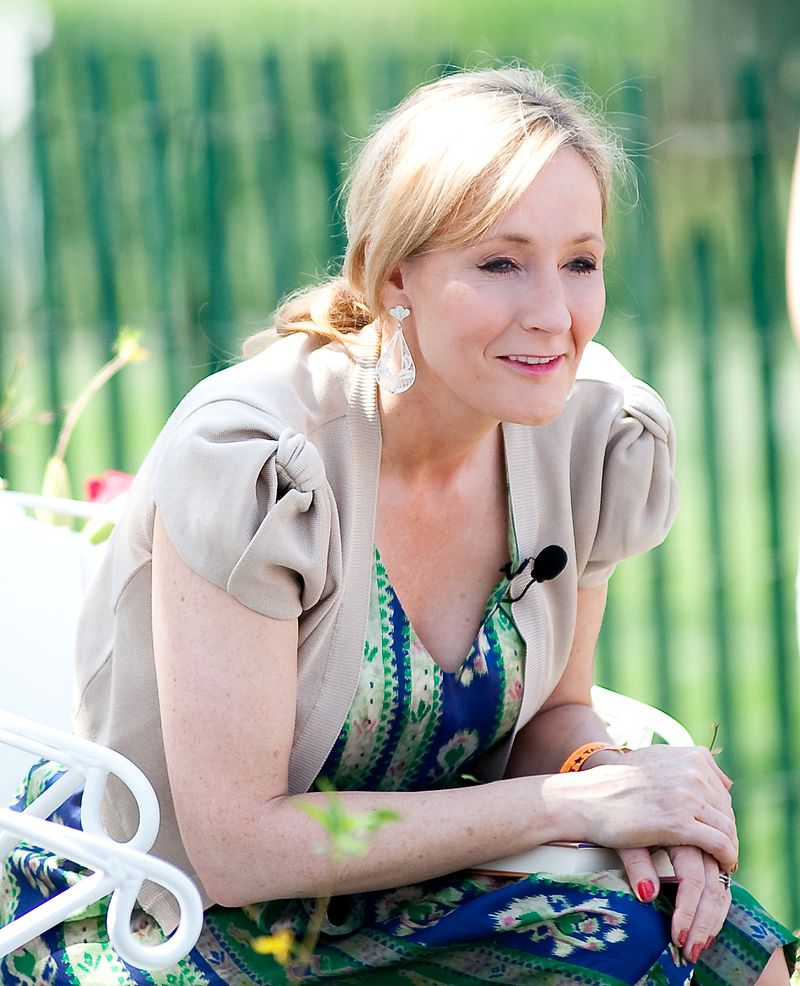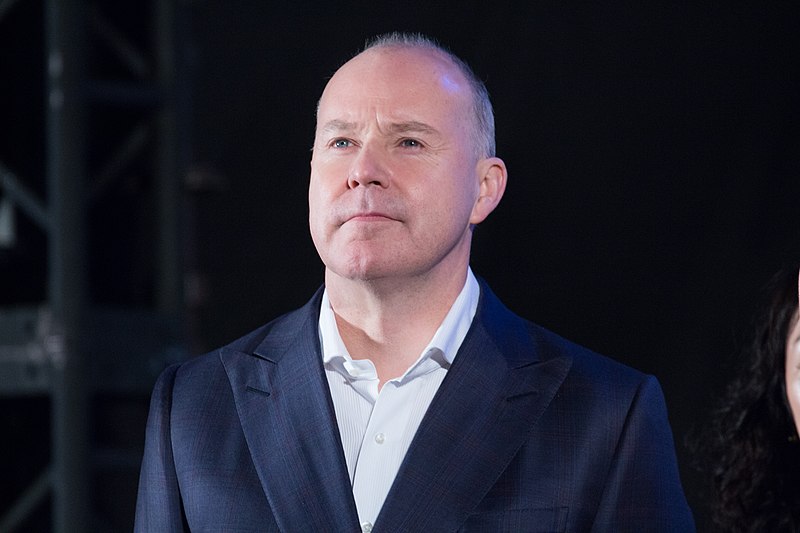Title of the work
Studio / Production Company
Country of the First Edition
Country/countries of popularity
Original Language
First Edition Date
First Edition Details
Fantastic Beasts and Where to Find Them, directed by David Yates, screenplay J. K. Rowling. Burbank, CA: Warner Bros., in theatres: November 10, 2016.
Running time
Date of the First DVD or VHS
Official Website
pottermore.com (accessed: August 17, 2018)
Awards
Fantastic Beasts… won an Oscar for Best Achievement in Costume Design (Colleen Atwood), Bafta Film Award for the Best Production Design (Stuart Craig, Anna Pinnock).
Genre
Action and adventure fiction
Fantasy fiction
Motion picture
Target Audience
Crossover (Created for fans of the Harry Potter series of all ages)
Cover

We are still trying to obtain permission for posting the original cover.
Author of the Entry:
Anna Mik, University of Warsaw, anna.m.mik@gmail.com
Peer-reviewer of the Entry:
Elżbieta Olechowska, University of Warsaw, elzbieta.olechowska@gmail.com
Susan Deacy, University of Roehampton, s.deacy@roehampton.ac.uk

Portrait of J. K. Rowling, photographed by Daniel Ogren on April 5, 2010. The file is licensed under the Creative Commons Attribution-Share Alike (accessed: May 25, 2018).
J. K. Rowling
, b. 1965
(Author, Illustrator)
Joanne Kathleen Rowling, was born July 31, 1965 in Yate, Gloucestershire, England. She graduated from the University of Exeter with a degree in French and Classics, she is considered a writer with classical background. After publishing the first Harry Potter book in 1997, she gradually became the best known author of all time.
The Harry Potter septology (1997–2007), is one of the most successful and popular series in the history of children’s literature (Harry Potter and the Philosopher’s Stone sold in 107 million copies). It may be argued that, from the very beginning, the author herself had to expand this world, fill the gaps, and explain all the rules– not only by discussing some issues (later on – mainly on Twitter) or giving guidelines in the interviews but by creating her website Pottermore. Once it was an online platform, where fans could read the series simultaneously with Rowling’s commentary and additions. Now it serves more as commercial space, although Rowling still adds some new elements (e. g. the short history of magical schools in USA).
To give to the devoted fans of Harry something that would allow them to feel the magical bond with the world they want to be a part of she created three books that now exist in both the secondary world of Hogwarts and the primary world where the reader can have a copy in their own hands.
HP Series Spin-offs:
Quidditch Through the Ages by Kennilworthy Whisp (2001), Fantastic Beasts and Where to Find Them by Newton Scamander (2001) and The Tales of Beedle the Bard (2007)* are allegedly copies of books from the world of Harry Potter which include different literary genres and publication formats: history of sport, bestiaries, and collections of fairy tales. These books are not part of the septology, but they provide complementary information about sports, animals and animal-like creatures, and fairy-tales of the Wizarding World. Additionally, they can be interpreted as a device to help convince readers of the reality of the magical world. In these three books, as in the series sensu stricto, J. K. Rowling plays on various levels with great literary traditions, using one of the many features of postmodern literature.
Bio prepared by Anna Mik, University of Warsaw, anna.m.mik@gmail.com
* Hand-written copies were released in 2007, printed ones in 2008.

David Yates, photographed by Dick Thomas Johnson on November 21, 2016. The file is licensed under the Creative Commons Attribution-Share Alike (accessed: May 25, 2018).
David Yates
, b. 1963
(Director)
David Yates (1963) is best known for directing the last four movies of the Harry Potter series: Harry Potter and the Order of the Phoenix (2007), Harry Potter and the Half-Blood Prince (2009) and Harry Potter and the Deathly Hallows: Part 1 (2010) and Part 2 (2011). In one of the interviews promoting the Fantastic Beasts and Where to Find Them he admitted that his excitement concerning the new production was connected to doing everything from scratch, creating a whole new world, which he could not do with the Harry Potter series (he joined the crew half-way through) (Interview: ScreenSlam). Yates is contracted to direct the next two movies, but it is very likely that he would go on directing the whole five-part series of the Fantastic Beasts…
Bio prepared by Anna Mik, University of Warsaw, anna.m.mik@gmail.com
Casting
Newt Scamander: Eddie Redmayne,
Graves: Colin Farrell,
Tina: Katherine Waterston,
Mary Lou: Samantha Morton,
Jacob Kowalski: Dan Fogler,
Credence Barebone: Ezra Miller.
Sequels, Prequels and Spin-offs
There will be four more movies about Newt Scamander. The next one, Fantastic Beasts: The Crimes of Grindelwald is due to be released in 2018.
Summary
Although the movie has the same title as the book [see the entry] written in 2001, it is a completely separate “prequel” story about the fictional author of the said text, Newt Scamander. The story starts in 1926, when the not-yet-famous magizoologist comes to New York with a mysterious suitcase which, as we learn later, contains various magical creatures. The main purpose is to release one of them to its natural habitat in Arizona, however along the way things get complicated. Almost instantly we are introduced to the world of magic in the United States, which differs from the one that we know from Harry Potter. Newt meets two of his friends to-be: Jacob Kowalski, a no-maj (muggle) and Tina (a witch and former auror). During some unfortunate events, Newt displaces some of his charges and embarks on the adventure of finding them, although the main thread of the story is the search for a creature that can hardly be named ‘a beast’ (although it is actually called that once, Rowling 2016: 140): an Obscurial, a young witch or wizard who by supressing his/her magical powers develops a dark and uncontrollable power called Obscurus. Newt’s task is to find the carrier of the power before he or she will completely destroy the city and kill more people.
Analysis
On the surface, the text has no obvious connections to classical antiquity (almost no Latin names, mythological creatures, etc.). While in the book there are remnants of antiquity, like the Centaurs or Cerberus, in the movie, there are no Graeco-Roman creatures to be found. Almost all of the fantastic beasts are based on native American beliefs and are strongly connected to the socio-political reality of the United States in the late 1920s. However, if we take a closer look we can find some classical motifs underneath that very American layer.
In classical mythology, we encounter many marvellous creatures, here we also have the opportunity to meet beasts possibly not quite recently invented. The Greeks believed in Centaurs and fauns, even though these creatures were not real (at least to our knowledge). Yet, it was difficult to meet them: most lived on Olympus or in deep forests, lakes, high up in the mountains, etc. They usually met with mortals when required by gods or goddesses. To be a mythical creature meant to be special, exclusive and protected from common sight. In the Fantastic Beasts… we see the same motif. Magical creatures are misunderstood – not only by the no-majs, but also by the wizards who perceive them as dangerous, uncontrollable monsters that need to be eliminated. Luckily, Newt Scamander understands them and protects them in a well-designed environment that he magically created in his suitcase, and he uses them (just like a Greek god) only when he needs their help, as we see in the conversation between two characters, Jacob and Newt:
‘JACOB: So what – you, you rescue these creatures?
NEWT: Yes, that’s right. Rescue, nurture and protect them, and I’m gently trying to educate my fellow wizards about them’ (Rowling, 2016: 104).
Fantastic beasts have to stay mythical in order to be safe – as the encounter with such creatures, or the contact with a divine sphere (similar to the mythological one) can be overwhelming for both sides, no-maj and wizard alike.
We do not encounter human hybrids (as we would consider the Centaurs, for example); the word ‘animal’ does not appear even once. The only human-like creature that can be included in the American magical menagerie is the already mentioned Obscurial: a mysterious fearsome creature whom the ignorant want to eliminate and who is understood and protected only by Newt. This might also be one of the classical motifs: obscurus in Latin means ‘dark’, but also ‘little unknown’ and ‘rare’ – and that might be the very essence of the cultural construct of a mythical animal or of a different human presented here as the cultural Other. In any case, according to Newt Scamander, the most dangerous creature of all is man (Rowling, 2016: 113-114), that is why fantastic beasts need to be isolated – on their own magical Olympus.
Further Reading
About the Fantastic Beasts… on pottermore.com (accessed: August 17, 2018).
Green, Amy M., “Revealing Discrimination: Social Hierarchy and the Exclusion/ Enslavement of the Other in the Harry Potter Novels”, The Looking Glass: New Perspectives on Children’s Literature 13.3 (2009).
Interview with David Yates “ScreenSlam” (accessed: August 17, 2018).
Mik, Anna, “Magizoology: the magical creatures studies J. K. Rowling’s postulates on animals in “Fantastic Beasts and Where to Find Them” on examples from Graeco-Roman mythology”, Maska 33 (2017): 21–34 (accessed: August 17, 2018).
Rowling, J. K., Fantastic Beasts and Where to Find Them. The Original Screenplay, London: Little, Brown, 2016.


